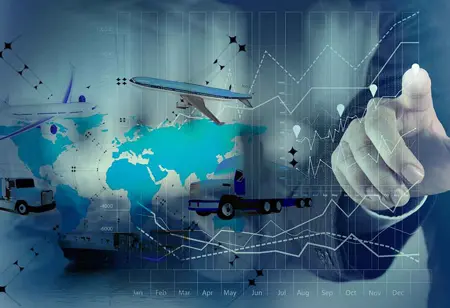THANK YOU FOR SUBSCRIBING
THANK YOU FOR SUBSCRIBING

By
Logistics Transportation Review | Friday, May 26, 2023
Stay ahead of the industry with exclusive feature stories on the top companies, expert insights and the latest news delivered straight to your inbox. Subscribe today.
By adhering to best practices and maintaining visibility throughout the supply chain, businesses can establish a solid foundation for success in this dynamic and expanding industry.
FREMONT, CA: The effective management of the cold supply chain is essential in today's globalised economy for sectors including medicines, food & beverage, and biotechnology. The movement, storage, and handling of temperature-sensitive goods while preserving their integrity and quality are collectively referred to as the "cold supply chain." To manage the cold supply chain properly, visibility and technology have become crucial components. This has allowed firms to overcome obstacles and improve their operations.
1. Real-Time Monitoring and Tracking
One of the primary challenges in the cold supply chain is maintaining the required temperature range throughout the journey. Temperature fluctuations can lead to spoilage, reduced efficacy of medicines, or compromised food safety. Advanced temperature monitoring technologies, such as IoT-enabled sensors and data loggers, play a critical role in overcoming this challenge. These devices provide real-time data on temperature, humidity, and other environmental conditions, ensuring that products are stored and transported within the specified parameters. Such visibility allows for prompt intervention in case of deviations, minimising the risk of product damage or wastage.
2. Data Analytics and Predictive Maintenance
Incorporating data analytics into the cold supply chain management process enables businesses to gain valuable insights into various operational aspects. By analyzing historical data, companies can identify patterns and trends, optimize routes, and anticipate potential issues. Predictive analytics can be used to forecast demand, enabling proactive planning and ensuring the availability of temperature-controlled storage facilities and transportation resources. Additionally, predictive maintenance techniques help detect equipment failures or deviations from optimal conditions, allowing for timely repairs or replacements, and reducing the risk of disruptions in the supply chain.
3. Blockchain Technology for Transparency and Traceability
Blockchain technology has gained traction in recent years as a means to enhance transparency and traceability in supply chains. In the cold supply chain, blockchain can play a vital role in tracking products from their origin to the end consumer. By recording every transaction and movement on an immutable ledger, stakeholders can verify the authenticity and integrity of the products at each stage. This technology is particularly beneficial in industries like pharmaceuticals, where ensuring the authenticity of drugs and preventing counterfeiting is of utmost importance.
4. Integration and Collaboration
Effective management of the cold supply chain requires seamless integration and collaboration among various stakeholders, including manufacturers, logistics providers, and retailers. Technology plays a crucial role in enabling this collaboration by facilitating the exchange of real-time information, optimizing inventory levels, and streamlining communication. Cloud-based platforms and centralized data repositories enable stakeholders to access and share critical information, leading to better coordination and improved efficiency across the supply chain.
5. Compliance and Regulatory Requirements
Strict regulations govern the handling and transportation of temperature-sensitive products, particularly in the pharmaceutical and food industries. Technology can assist in compliance by automating data collection and generating accurate records, ensuring adherence to regulatory requirements. Additionally, the use of electronic documentation and digital signatures simplifies administrative processes, reduces paperwork, and enables efficient auditing.
Technology and visibility have become key components in managing the cold supply chain in an era where temperature-sensitive goods are traded globally and their quality and safety are vital. Using real-time monitoring and data analytics, blockchain technology, and seamless stakeholder integration, businesses can reduce risks, optimize operations, and guarantee regulatory compliance. Industry players must embrace these improvements as technology develops and use them to improve the effectiveness, visibility, and resilience of their cold supply chains. By doing this, they can fulfil client expectations, promote sustainable growth, and keep a competitive edge in a market environment that is constantly changing.
I agree We use cookies on this website to enhance your user experience. By clicking any link on this page you are giving your consent for us to set cookies. More info





